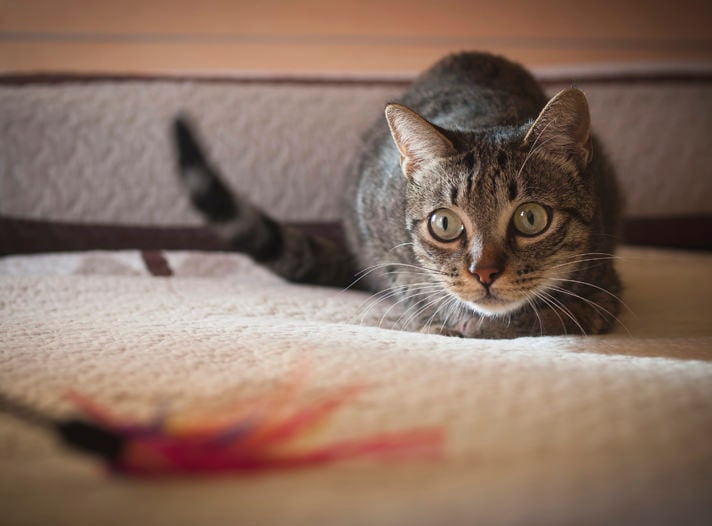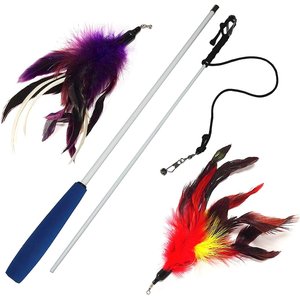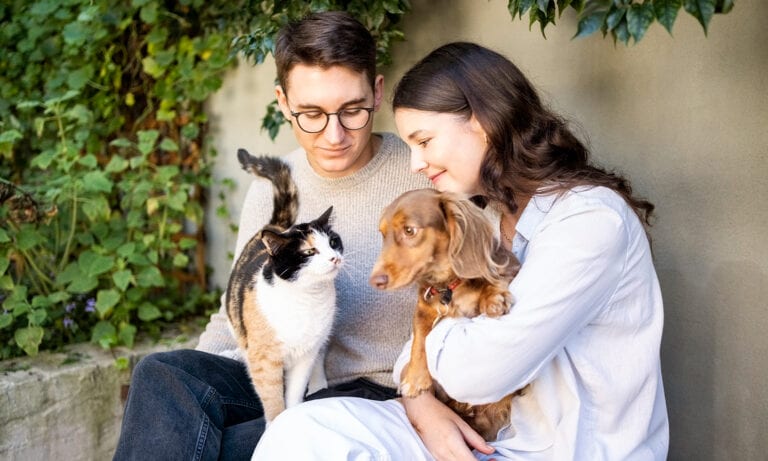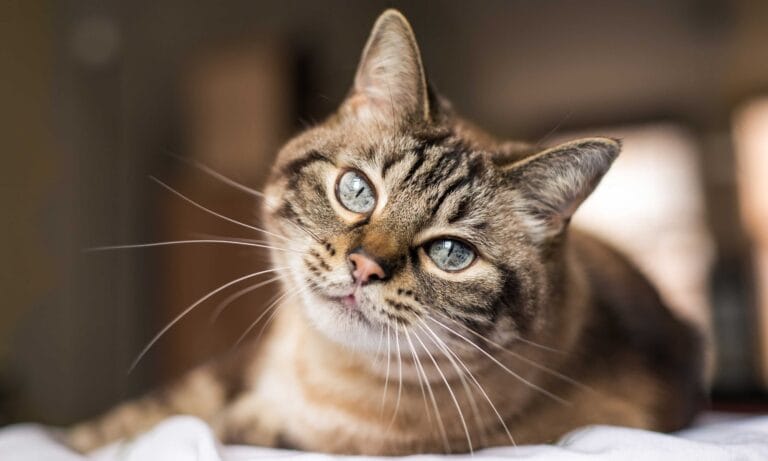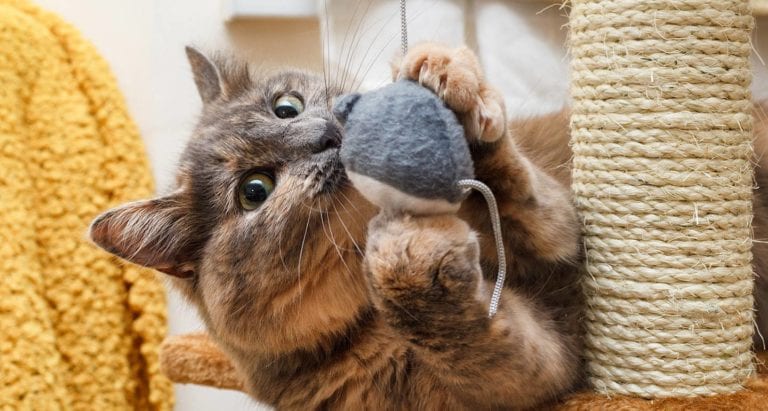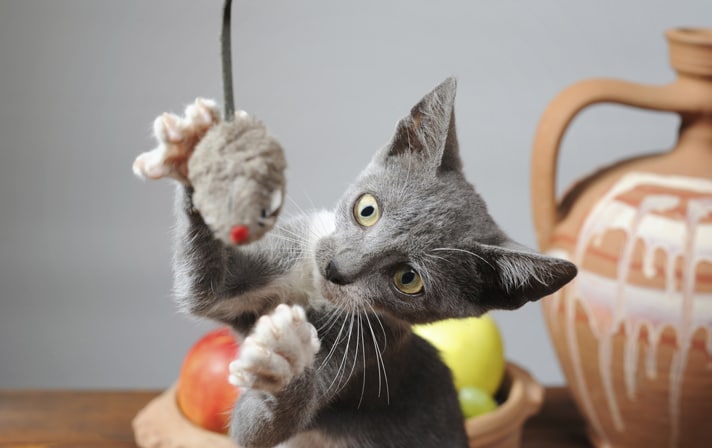Our experience transitioning from living with a single cat to a multi-cat household reinforced something we already knew; that cats are unique, complicated little creatures. Although most cats now live indoors, their relationship with people and their nutritional, physical and emotional needs remain distinctly different from other companion animals. Our house cats are similar to their ancestors in anatomic, metabolic and behavioral ways.
Cats Need The Freedom To Be Cats
Cats lived for thousands of years on the perimeter of human society, cohabiting with us yet holding on to their independence. Cats interacted with humans only when they chose, allowing themselves to be part of the human family while still retaining their wild side. Cats are one of the few true carnivores that humans have tried to domesticate. Humans trying to get their cats to adapt to their own lifestyles and preferences with no regard for the cat’s inherent needs often leads to what cat owners refer to as a behavior problem on the part of the cat. Most of the time, the cat is not at fault.
A captive, indoor cat is still a crepuscular creature with a free spirit who has the needs of her wild cousins. Studies show that many of the chronic health problems of domestic cats are directly or indirectly related to not only nutritional choices, but the lifestyle changes we force upon our cats.
Indoor cats live under our rules. We control what, when, where and how our cats eat, eliminate and have the opportunities for species-typical activities. The relationship with our cats is two-fold. Our actions influence the behavior of our cats, which in turn influence our subsequent actions based on what we think about the cat’s behavior. This dynamic relationship can be compared to the parent-child relationship, meaning your behavior toward your cat definitely has an impact on the actions of your cat.
The fiercely independent feline is what many of us find endearing, and yet sometimes we make the mistake of thinking this independence means our cat doesn’t need much. The truth is our cats need toys, interactive playtime and environmental enrichment to keep them happy, healthy and to satisfy their hunting instinct.
Know Your Cat’s Preferences For Hunting And Play
We want to make sure our cats have access to toys that engage their hunting instinct. Hunting, stalking and pouncing are all part of a cat’s natural hunting/play behavior. Each cat will show a preference for the type of hunt-style play they enjoy. Eddie loves to play and entertains himself for hours with a wand toy that we have attached to the doorframe so that he can interact with the toy without our assistance. Eddie also loves small furry toys that he tosses in the air and then pounces on. His favorite is a little stuffed lion that he carries around and protects every day.
Annie prefers to play hide-and-seek. We make sure we interact with her throughout the day to keep her desire to hunt satisfied. She is such a delight to interact with, from her little wiggly behind as she prepares to pounce to her big eyes as she sneaks around the corner. Annie also loves to leap in and out of a cardboard box, and if there is crinkly brown paper inside, even better. She is also the biggest fan of catnip in our house.
In the evening, Paul and I bring out a wand toy and play with all three cats. Annie loves to leap into the air after the feathers on the end of the wand. Eddie prefers to crouch and pounce on the toy as we wiggle it across the floor.
Mercy prefers to interact with puzzle feeders and works until he gets his treat. Because he spent most of his life as the only cat in the home, he is just now starting to interact in play with Annie and Eddie. All three cats play tag at night. We love to hear their little paws scampering down the stairs, back up the stairs, and skidding around corners until they finally come to settle down and sleep. When we see Mercy engaged in play with Annie and Eddie, it really makes us happy.
The cats’ favorite place to satisfy their hunting instinct is in the sunroom. We have several bird feeders and a squirrel feeder placed strategically around the sunroom windows for maximum viewing — and for each cat to view alone if desired. Because Annie gets a bit excited, we secured the windows in the sunroom with C-clamps to keep the windows from opening wide enough for her to slip out. All of our windows have screens, but when Annie is super excited watching birds or squirrels, we won’t take the chance she could bust through the screen.
We have a cat tower, several cat scratchers, a cat track toy where the cats can chase after a blinking ball, several puzzle feeders, and some cave-style beds for those times the cats want to see but not be seen.
Do-It-Yourself Fun
Providing our cats with toys that we make ourselves can satisfy our cat’s hunting instinct (or for those who are less handy, there’s a large range of cat toys you can buy that will do the trick). I bet you can think of many more ideas to engage your cat’s hunting instinct in addition to the following:
- Place a few cat treats inside aluminum foil and toss on the floor.
- Clear off the top of a desk beside a window and place a bird feeders outside for entertainment.
- Cut holes in a cardboard box to make a fun game of hide-and-seek.
- Use a branch with some twine and attach a small toy to the end to create your own wand toy.
- Create an indoor cat garden with cat-friendly plants and hide a few treats and small toys in among the plants.
Our cats will be happier and healthier when they live in an enriched environment. A happy, satisfied cat is less likely to get into mischief or cause problems than a bored cat. You will also feel more bonded and develop a closer relationship with your cat through interactive play. Enjoy this time, and happy hunting!
Joanne McGonagle has a Global Field Master of Zoology degree with a concentration on big cats and is currently an instructor for Miami University’s Global Field Program. Her studies include time spent at the Cheetah Conservation Fund in Namibia, Amboseli National Park and with the Maasai in the South Rift Valley of Kenya.
Share:
